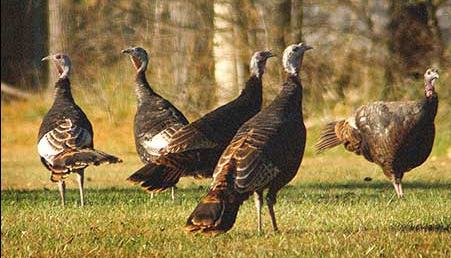Wild turkey are unique animals that fill a very specific niche in the habitats that they occupy. However, some areas have experienced declining turkey numbers over the years. Suitable habitat management practices have been proven to enhance available food resources, increase wild turkey populations, and result in better turkey hunting. That being said, turkey management is easier said than done. It takes serious dedication from a landowner to manage such a large-ranging animal.
Question Received: “We have 625 acres in western Blanco County and are want to improve habitat for turkey. We are in the Texas Hill Country and have scattered woodlands consisting of cedar and oak with some draws and two seasonal creeks. Our main goal has been to encourage plant diversity and thus wildlife habitat management. The land was very badly damaged by overgrazing and some row crop production before we purchased it. Now we want to restore and improve the plant communities for all native wildlife, but we have a special interest in turkey.
Moving forward, I would like to understand better how to economically encourage native grasses. Though we have seen a healthy return of silver bluestem and this year some sideoats grama, we still have an awful lot of King Ranch bluestem (which is horrible for turkey, quail and most other animals). I would also like to know more about reestablishing bobwhite and turkey. Any insight into feral hog control would be appreciated as well—our trapping program does get quite a few hogs, but I would like to get even more of them!
I would appreciate any help with grants that might be available, and also want to learn more about stewardship in general. We have been working with a rancher that owns the adjacent property, but if there are additional resources out there I’d like to know about them.”

First, good turkey habitat is comprised of many different plant communities. Turkeys require grasslands, some brushy areas and plant communities consisting of large to trees with some type of water. The most economical way to promote native grasses is to moderately disk the property to stir up the soil seed bank in areas that were previously grazed. Native grass seeds often exist in the soil, but because of the inadequate mix of soil, water and heat the seeds never germinate. Disking can help jump-start the process. That being said, it may take two to three years to see the response.
Turkey and quail require native bunchgrasses for different reasons, but they do make up parts of the each of the bird’s habitat. In addition to grasslands, attempt to identify areas on your property where turkey may be roosting and aim to protect those areas. Often times in Central Texas roost areas become unusable because of the encroachment of ashe juniper (cedar). Diligent brush management is often is necessity in these areas, but only work around roost areas a few times a year and always during the middle of the day when turkey are not in the area.
It also sounds like feral hog control should be a part of your turkey and quail management program. Hogs can destroy habitat and eat the eggs of all ground-nesting birds. Hog trapping and hunting will both be necessary to at least keep hogs uneasy about visiting your property. It is impossible to totally eliminate hogs, but continual harassment through hunting and trapping will help.
Turkey management takes a long-term planning and short-term work. The best thing you can do is develop a management plan and adapt the management strategies as necessary. There is no such thing as a one size fits all when it comes to wildlife management, and turkey management is no different. Provide native grasslands comprised of bunchgrasses, wooded areas with scattered understory, forest with open understory, and some source of water, and turkey will make use of the area.